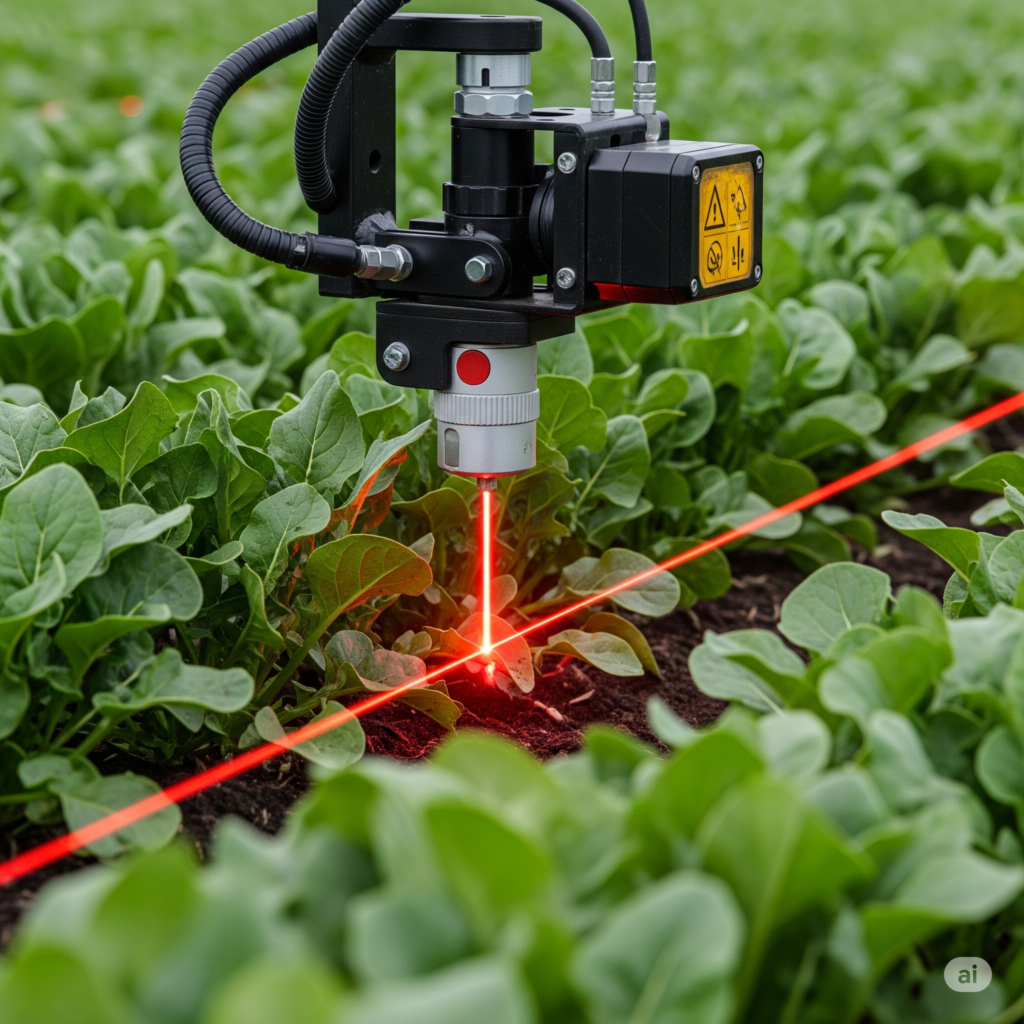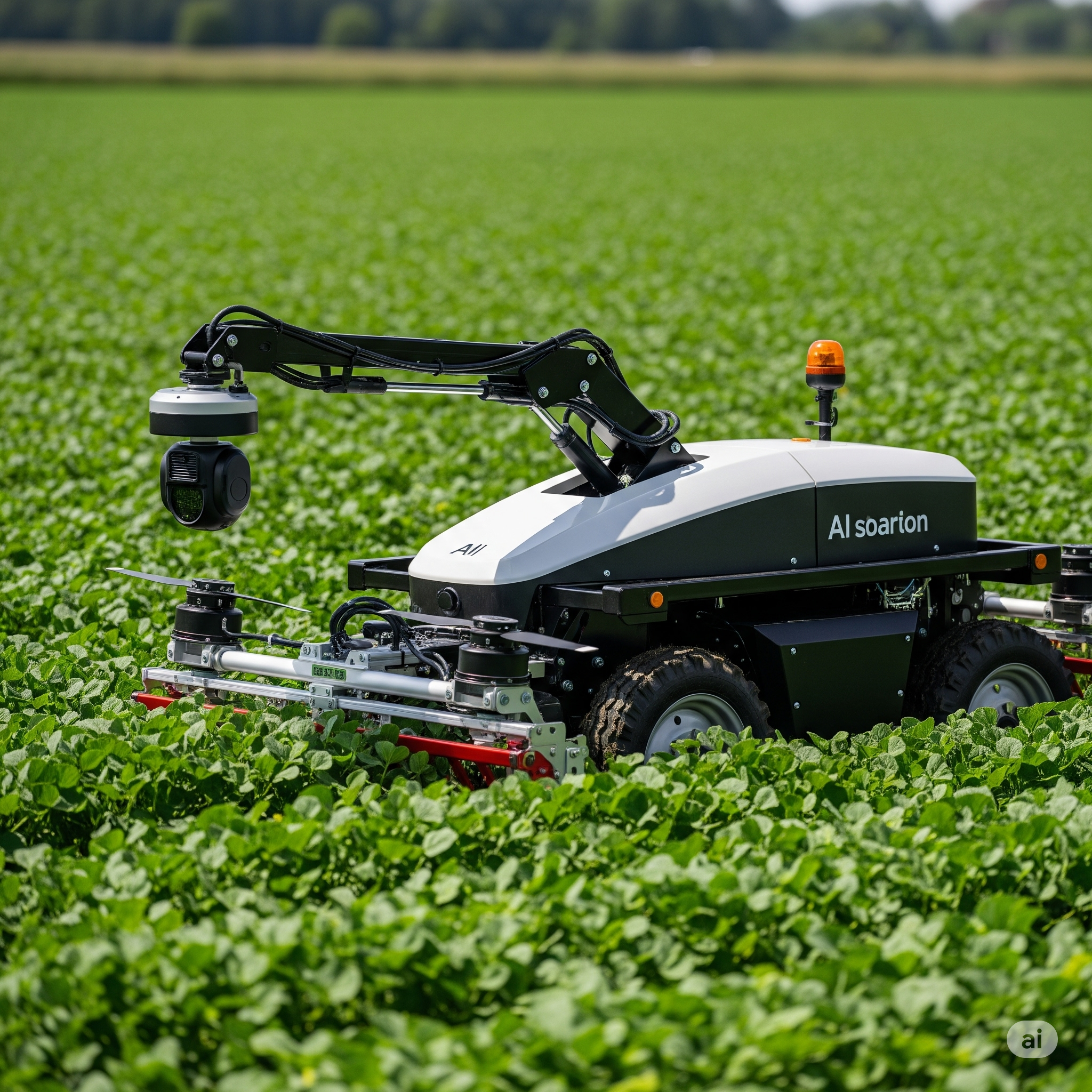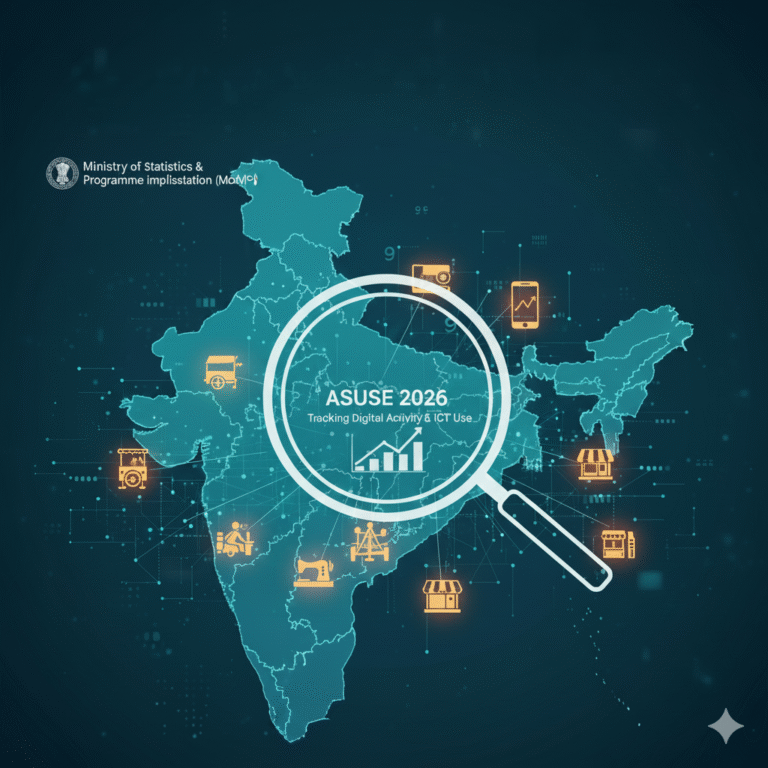In a world facing climate uncertainty, labor shortages, and environmental degradation, agriculture stands at a crucial juncture. One of the most promising responses to these challenges comes from artificial intelligence (AI) and robotics. Around the globe—and increasingly in India—AI-powered robots are emerging as capable replacements for harmful weed killers and even traditional farm labor. From precision spraying to autonomous navigation, these machines are reshaping the landscape of farming as we know it.
This blog explores how AI robots are addressing two major agricultural challenges—chemical dependency and labor scarcity—and what it means for the future of farming, especially in a country like India with its vast agrarian base.
The Problem with Traditional Weed Control
Weed management is one of the most labor- and chemical-intensive tasks in agriculture. In India, herbicides are heavily used to combat weeds that reduce crop yield by 10–80% depending on the crop type. According to the Indian Council of Agricultural Research (ICAR), herbicide usage has increased by 20% in the past decade, leading to rising input costs, soil degradation, and water pollution.
Additionally, rural labor shortages—particularly after COVID-19—have made it harder for small farmers to manage large fields. Manual weeding is time-consuming and physically exhausting, especially for women who make up a significant portion of India’s agricultural workforce.
Enter the AI Robot

AI-enabled robots, powered by computer vision, machine learning, and autonomous navigation, are now able to identify weeds in real-time and treat them with extreme precision. Here are some of the capabilities making headlines:
- Precision Spraying: Robots equipped with cameras and AI can distinguish weeds from crops and apply herbicides only where needed, reducing chemical usage by up to 90%.
- Mechanical Weeding: Some robots use AI-guided arms to physically remove weeds, eliminating the need for chemicals altogether.
- 24/7 Operation: These robots work round the clock, powered by solar or electric batteries, thus saving time and maximizing efficiency.
One such company making waves is Carbon Robotics (U.S.), whose autonomous LaserWeeder uses thermal energy to kill weeds without disturbing the soil or crops.
Benefits for Indian Agriculture
1. Reduced Chemical Dependency
AI robots make it possible to shift from broadcast herbicide spraying to targeted treatment, helping reduce the environmental impact of agriculture.
2. Addressing Labor Shortage
By automating repetitive tasks, these robots can ease the labor burden, especially in rural areas experiencing migration to urban centers.
3. Improved Crop Yields
Effective weed control without chemical overload means healthier soil, fewer plant diseases, and ultimately better yields.
4. Cost Efficiency in the Long Run
While the upfront cost of these machines is high, they can pay off over time through reduced input costs and labor needs.
Challenges and Considerations
1. High Initial Investment
Most AI robots cost between ₹5–25 lakh, making them inaccessible for small and marginal farmers without government support or cooperatives.
2. Skill and Training Requirements
Operating and maintaining these robots requires basic digital literacy and regular tech support.
3. Customisation for Indian Terrain
Many existing models are designed for large, uniform fields in developed countries. Indian farms, often small and fragmented, need adaptable models.
4. Policy and Subsidy Support
The Indian government’s push for AgriTech and smart farming in Budget 2025 includes provisions for tech subsidies, but these must be implemented at scale.
What’s Next? The Future of AI in Farming
Startups like TartanSense and Fasal in India are already developing cost-effective, AI-powered robots tailored for Indian conditions. Fasal, for instance, combines AI with IoT sensors to give precision irrigation and pest control advice to farmers. Meanwhile, government-led incubators and state agricultural universities are also stepping in to bridge the knowledge and affordability gap.
The rise of AI robots marks not just a technological leap, but a cultural one. For a farming community deeply rooted in traditional methods, this transformation will require trust, education, and inclusion.
Conclusion
AI farming robots offer a beacon of hope for India’s struggling agricultural sector. By replacing weed killers and alleviating labor shortages, they pave the way for more sustainable, productive, and dignified farming. But for this vision to become reality, access, affordability, and awareness are key.
From Karnataka’s sugarcane belts to Punjab’s wheat fields, the quiet hum of AI-driven machines may soon become the new rhythm of rural India. The future of farming is not just smart—it’s robotic.









+ There are no comments
Add yours